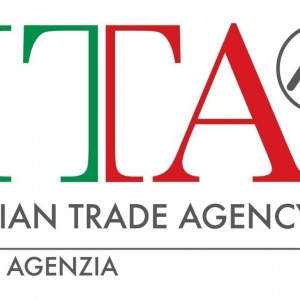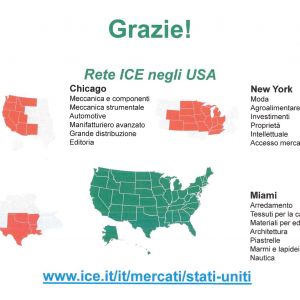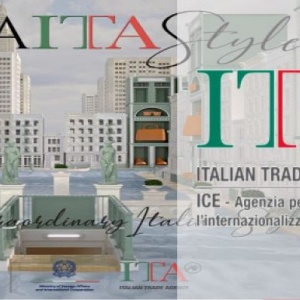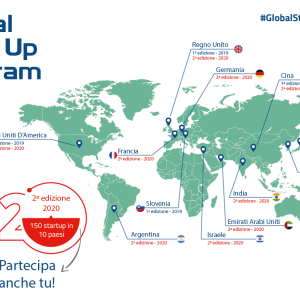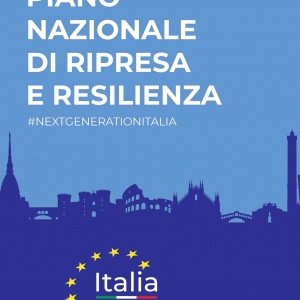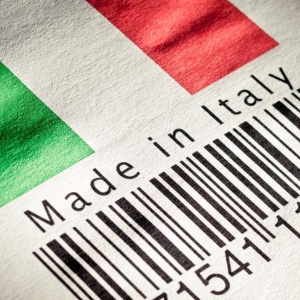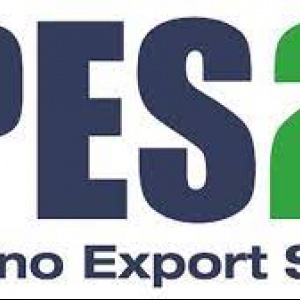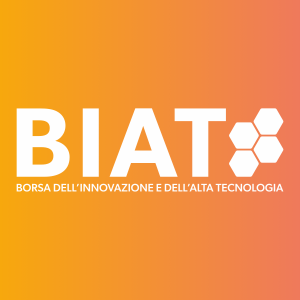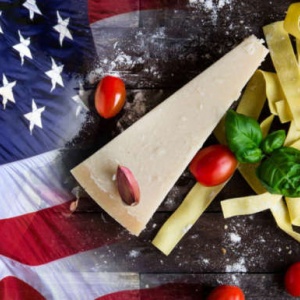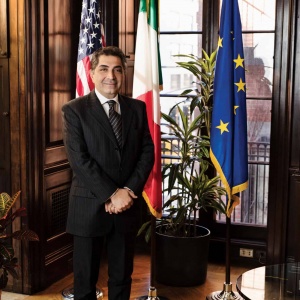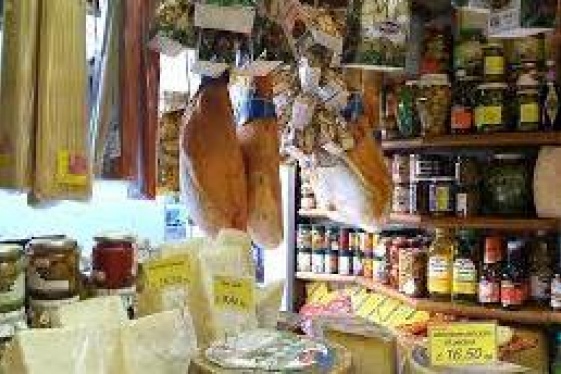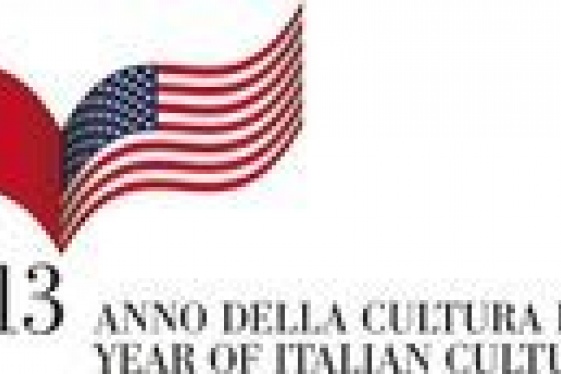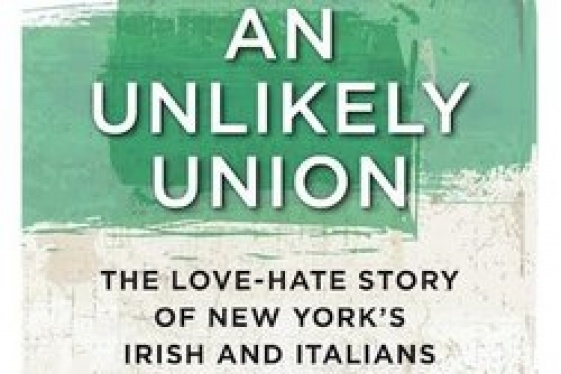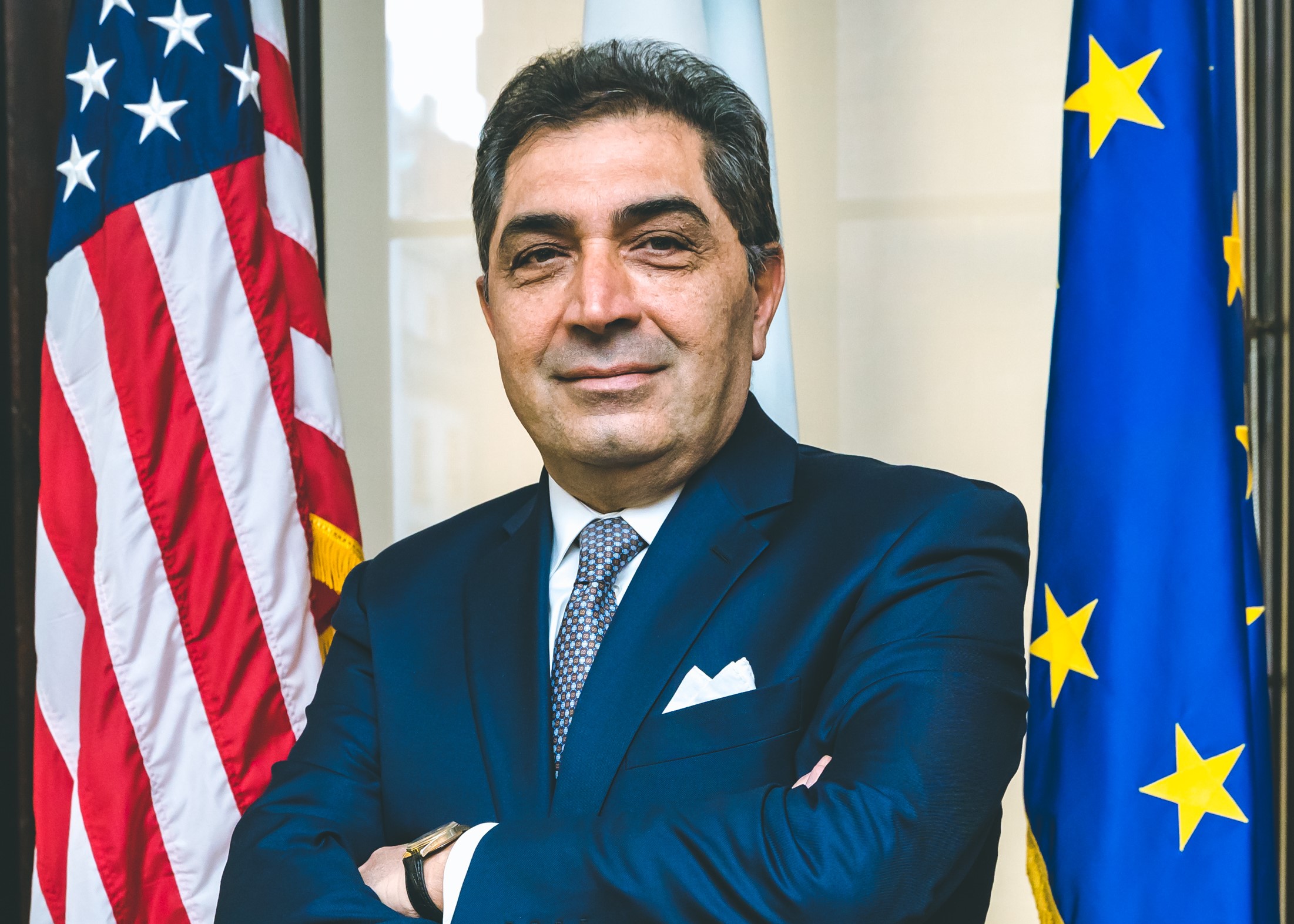
Antonino Laspina (Manager of Italian Trade Commission in New York)
Passato, presente e futuro del Made in Italy negli Stati Uniti

If Made in Italy is a fundamental aspect of the Italian presence in America, not only from a commercial point of view but also from a diplomatic and cultural one, it is ICE (the Italian Trade Agency) that is mainly responsible for following the system of promotion and distribution of Italian products in the United States.
ICE is present in America with five offices, divided territorially but also thematically. The New York office coordinates everything, and has been led for a couple of years by Antonino Laspina, an expert manager who has travelled the world and was also head of ICE marketing in Italy. The interview with the Manager of ICE New York has been very interesting for me, and I am sure it will be for our readers as well. Many thanks to Mr. Laspina for his availability.
Mr. Laspina, first of all a personal note: in the history of your family there is a link with America, right?
Yes, it's true. One of my great-grandfathers with a brother of his in 1906 decided, like many others, to go to America. They stayed about three years, but then they decided to come back, also like many others. My family didn't put much emphasis on this episode. However, for me, who grew up in the house of my maternal grandfather, the son of this gentleman who was temporarily Italian American, it was not something trivial. As a kid, I noticed objects that were completely detached from the classic decoration of a Sicilian house, and then I started asking and this thing began to come out: they were objects brought back from America by my great-grandfather, and they began to add information about him.
My maternal grandfather gave me a fountain pen from his father and I used it a lot because in the 80s the fountain pen was very fashionable and I was pleased to have a fountain pen bought in the United States. Outside of this, in my career even before coming to work here I have crossed the US markets several times, in particular on two occasions that I love to remember. The first was when I was part of the delegation that came to visit immediately after September. 11. We were received by Mayor Giuliani, who even took us there, and I remember really touching moments, very strong sensations. The second concerns my participation in a project that was created by the IAI (Istituto Affari Internazionali), an Italian study center for international relations based in Rome. The project is called Young Leaders and over time has seen the selection of emerging young people. I remember that in 1997 thanks to this program I went to San Francisco for a one week course and we went to lunch with the then still little known Nancy Pelosi.
In addition to directing the Italian Trade Agency (ICE) office in New York, you are the coordinator of all the ICE offices in the United States: which territorial areas do they cover, and how are the different sectors of Made in Italy divided among them?
The guiding philosophy is to preside over the market. To do this, it was important that two matrices intersect: the matrix of the territorial specialization of the place where our office is located, and then, of course, there is also the problem of not overloading an office with particular activities to the detriment of the others. For 40 years now, ICE has been very reactive over time also with respect to the dynamics that have taken place in the American market. The presence of ICE in the United States has always been very dynamic, in step with the speed of the evolution of the American economy.
Today we have New York, Chicago, Miami, Houston and Los Angeles. Each office has a territorial specialization. Houston has everything around the realities of the space economy, technology, and life sciences. Then it also deals with jewelry, because we believe that this could be a frontier territory for the consumption of Made in Italy in the luxury sector. The ICE office in Los Angeles deals with high tech, that being the specialization of that area of the United States, but it also has a focus on everything that is sustainability and nature. The Los Angeles office also specializes in audiovisuals, tracing the specificity of that area of Southern California.
Very often the activity of the ICE is not perceived on the surface, because there are activities that have a strong public projection but then there are the very specialized ones, of the insiders: for example in the audiovisual sector, in addition to public events there is it is an activity of connection with the Italian Film Commissions which are put in contact with the American production centers, which in turn are invited to Italy.
Chicago of course can only be dedicated to manufacturing technologies, machinery and robotics. And then there is the activity of large-scale distribution in the food sector, which is in New York's area of responsibility, since it is a voice that gives us 6 billion dollars in exports along with wine, and therefore is a nation-wide coordination. and for this reason it falls under the New York office. The same thing is true for fashion, a sector that generates over 12 billion in exports from Italy to the United States and which is therefore centralized in New York, but with a coordination effect that must touch and in the future will increasingly touch all other centers, which are the new sanctuaries of US wealth.
And then there is Miami, which has its own thematic characterization, that of design, art, architecture and boating.
There are many success factors for Made in Italy. I mention three. The first is promotion: Italy has been good at promoting itself, in soliciting the consumer and his spending power. We know, and by now also American consumers know, that the Italian product has a cost because it satisfies the new values that are on the market: sustainability, the green and healthy approach, well-being, quality. So we know that when there are certain levels of spending power, that's where we can best encourage the consumption of our products and promote them.
Then of course there is education. And it's not a secondary factor; on the contrary, to properly appreciate the Italian product, in any sector, you need to have that education that allows you to understand the work behind the finished product. Let me give you an example: in furnishing or even in clothing, the final consumer needs to understand that Italy has banned toxic substances in production, that it uses materials that are cultivated and not cut from forests, that artificial fibers derive from controlled and certified processes, while natural ones do not cause damage to the ecosystem. And this is not new: Italy adopted these values before they became a priority for the majority of consumers.
And then, in my opinion, the third value is that of the mobility of people who travel, because this becomes the essential condition for understanding that the success of Made in Italy is certainly not an exclusively American phenomenon. When the American consumer goes abroad, even without coming to Italy, he finds Italian products appreciated and promoted everywhere. Whether you go to Tokyo, Singapore, even Paris, there is a great diffusion of Made in Italy products, which confirms the success of our quality.
As I said, however, it is interesting and it is essential that we begin to pay attention to the territories that have not yet been fully explored. We do it with optimism, because there is a big job to do. It is important for us to be able to talk about increasingly Nation-wide activities, also playing on a strong connection with the consular offices under what is the new governance that was created in 2020, when export-related activities passed under the aegis of the Ministry of Foreign Affairs, and which naturally sees centralized coordination at the Embassy in Washington DC.
We are aware that the widespread presence of the Italian American community has created considerable opportunities for us to be able to conquer new territories. Thanks also to them, Italy has managed to be successful over the years among the different generations of Americans, passing from WASPs to baby boomers and then also to millennials, a feat that 20 years ago seemed almost impossible because they reasoned based on dynamics a which we were absolutely not used to. Today we realize that we are probably also starting to be equipped to conquer the zeta generation, because we are pursuing digitization, we are improving communication with the new tools available, we are able to bring our product into much wider distribution circuits. So I am optimistic about the possibility of involving the younger generations and those to come and being able to see them appreciate the Italian lifestyle and therefore buy our products, also for the strongly sustainable and respectful approach to the environment and the future of which I have spoken before.
You have been in New York for almost two years. In the same period, more or less, the Italian system of the big apple also changed the Consul General and the Director of the Institute of Culture. How is the Italian community starting again in New York?
I would say it started off well. Our structure is closely linked to trade fairs, which obviously suffered greatly from the pandemic, both in New York and in the rest of the United States. We have tried to find new tools that would allow us to continue the dialogue between Italian supply and American demand. We tried to ensure that the trade fair was replaced by a digital platform that would allow Italian companies to dialogue with American companies.
In the fashion realm we have developed a platform called ExtraITAStyle, a new generation virtual showcase in which there is interaction through codes that allow us to significantly increase the experience of the American consumer. This approach was then extended to jewelry and later to other sectors as well. Subsequently, a multi-sector platform was implemented from Rome, which made it possible to carry out operations on much larger numbers.
We also worked with a lot of training, a lot of education. In some cases we have even experimented with hybrid education, i.e. wines shipped to Dallas, with the speaker at the ICE headquarters here in New York and we did online training on wines. What will remain of this experience is the push towards digital that our companies have had in Italy, not only with reference to the United States. Italian companies understood that a process of acceleration of something we already had in progress was necessary.
However, as soon as it was possible to start traveling again, we started again with the events in person, only to go back to digital given the return of the prevention measures and then later reopen to travel and participation in presence when the rules allowed us. The delegations of American buyers were happy to return to the great Italian fairs. Their presence is important, digital cannot replace the presence, the meeting, personal relationships, travel and the ability to see, smell and taste the product in person.
Education has also become important, because it allowed us to explain the changing market to Italian companies: it was an excellent opportunity to raise awareness among companies, for example, on the subject of intellectual property, on patents. In these areas our companies often neglected certain factors, especially for a market like the American one.
Furthermore, in 2020 we carried out the Global startup program, which in 2021 was transformed into a remote program. A dozen Italian startups have been helped here in New York, collaborating with the Entrepreneurs Roundtable Accelerator (ERA) and as many as 50 have been to the USA. A third edition is planned for 2022.
So the balance of these months for me is that of a responsive New York, even in the Italian community, and ready to interface with Italy. A community that has shown itself ready to return to participate in the events that, with due caution and limitations due to the regulations relating to Covid, we have managed to organize with reference to the world of beauty, fashion, wine and food. Waiting for a safer and stronger recovery, which will see Italian companies active and finally ready to return permanently to America, and with American consumers hungry for Made in Italy, which due to events in recent years have arrived at them not as much as they would have liked.
Mr. Laspina, can you give us some numbers on Italian exports to the United States? There is a pre-Covid world and then there is the present, how are we doing?
According to data provided by the US authorities and processed by ICE New York, Italian exports to the US grew by 20% in 2021, far exceeding the levels of 2019, reaching 62 billion dollars.
Italy is committed to the implementation of the National Recovery and Resilience Plan (PNRR): very ambitious, necessary, difficult and promising. What is the impact of PNRR on the export world?
The PNRR can give us the opportunity to fill some gaps that our production system had accumulated or risked accumulating.
Among these factors, digitization is very important to update and improve the winning production processes that have accompanied us for decades and make them increasingly current and looking towards the future.
The second big challenge is the one that comes to us from communication. Ours is a country that focuses on segments of production specialization, and then needs to communicate this well, especially today when many production cycles need to be revealed in the light of the new attention to sustainability. A sustainability that is not only environmental, but also social: Italy is at the forefront of this as well, but we must learn to communicate it adequately. The ongoing BEIT campaign will have a positive impact.
Then there is also the question of distribution, logistics and infrastructures. The possibility of placing the product on the market in the best possible way, once the production process has been innovated and promoted with successful communication, requires adequate networks to make it reach the consumer quickly and well. It means building, improving and renovating roads, airports, ports, all the factors that are absolutely connected to the recovery of competitiveness in exports and all the factors that will allow us to grow further.
We ask you for a forecasting effort, it's a complicated question. If you think about the world of Made in Italy export to America in 10 years, is there something new that you can imagine, or even just hope for?
It is difficult to answer. When there were the first (unsuccessful) attempts to offer espresso coffee on the American market, espresso was in the situation of your question: something that was difficult to imagine as an integral part of the American lifestyle. In fact, the first pioneers in this sector failed. But then they tried again, times became more mature, some conditions changed and today it is absolutely normal to imagine espresso as part of the daily routine of millions of Americans.
At the end of the 1950s, the Gucci moccasin became part of American consumerism because JFK had adopted them and used them often: at the time it was inconceivable compared to the structured footwear that came from the English heritage, and then slowly became a normal part of the models of successful footwear also in America.
Again, I think of Armani's unstructured jacket, of the 1982 Time cover dedicated to Armani. At the time, no one would have thought that the Brooks Brothers style could be replaced by the Italian style.
And again, obviously a winning example is that of food. Today in the United States, cacio e pepe pasta is the trend of the moment: but how could it have been imagined 10 years ago that a harmonious combination of cacio e pepe and pasta could satisfy the appetite of an American subject who is used to very different foods? And so for the Italian panino that wins over the American sandwich, espresso but also cappuccino, and quality cured meats. But the most interesting thing is that all of this entered the common language of American families, something that seemed like an impenetrable fortress. Extra virgin olive oil is also a great success story.
Another example still in food today is the incredible success of Sicilian pastry, which is becoming popular. Or think of mozzarella. Or even bottarga, which still has a limited consumption but in any case in terms that no one could have foreseen just a few years ago. We at ICE, for example, are pushing the concept of an aperitif a lot, which could be the one that will explode in the coming months as a moment of lightness, of the Italian lifestyle that you can have at different times of the day.
So I say it's hard to imagine what “the next big thing” will be in 10 years, but there will certainly be one, and probably more than one.
What is the Export Sud (South Export) program?
The Export Sud project starts from the headquarters in Rome in 2015. These are resources that are assigned by the European Union to Italy and the Italian government decides to make them pass through ICE for this promotional activity. It is an activity intended only for Campania, Calabria, Sicily, Puglia, Abruzzo and Molise, in order to fill the existing gap, to which Sardinia has been added more recently for some projects.
Numerous events have been organized in this area, alongside the classic consolidated annual trade fairs. One of these events is the BIAT (Borsa dell'Innovazione e dell'Alta Tecnologia), or the Innovation and High Technology Exchange, now in its seventh edition. It is an event that from 2014 to 2021 was held in Bari, Naples, Catania, and in 2021 in Taormina. Thanks to BIAT, a hundred high-tech projects have been born, generated by the companies located in these areas of Italy thanks to the partnership with ICE that searches and finds partners all over the world and invites them to the event, also doing territorial marketing because it allows buyers from all over the world to visit these wonderful places as well.
In addition, the project provides several training moments necessary for these southern companies to improve their presence on international markets.
We the Italians’ audience is made by both Italian Americans, as to say Americans of Italian origin but born in the United States, and Italians born in Italy and then emigrated to America. What can Italy do to increase the purchase of Italian products by the former, and what are the products that the latter would like to find in America but still do not arrive?
The main challenge towards the Italian Americans is to inform them and present them, both in terms of distribution and in terms of consumption, the Italy of today. There is a lot to do in terms of education and consumer training. In fact, our seminars are not exclusively dedicated to professionals, buyers: we also address disseminators, journalists, influencers and opinion leaders, people who can become testimonials of what are the successful elements of Italian products. With regard to Italian Americans, therefore, we must be able to balance their passion for tradition and consumption for emotional reasons with the information that equally important for our products are the aspect of the excellence of the production process, food safety, ecological sustainability, respect for the environment, the elimination of toxic substances, the use of technologically advanced and sometimes revolutionary procedures, the advantages of the circular economy. These are further reasons for purchasing Made in Italy less linked to the affective sphere and its roots and more to rationality about the quality of process and product, the incredible diversity that comes from the innovation of processes that have cultural and historical traditions of great quality, and convenience in terms of sustainability.
Certainly a delicate but fundamental issue is that of protecting Italian products from the counterfeit Italian sounding. We ask you for some numbers that describe this phenomenon, and what are the possible ways out
We have a desk with a specialist who provides assistance to companies on the protection of intellectual property, because then of course anti-counterfeiting is not our responsibility and is attributable to the Guardia di Finanza. Last autumn we organized a seminar on this topic followed by almost 300 Italian companies.
The problem of Italian sounding is naturally a very delicate problem, they are sensitive issues that certainly damage our system and which in any case confirm our penetration into American society and other societies where this occurs. Among other things, Italian sounding does not only concern food but also other sectors because Italian sounding is also a name like Florence or Milan or Brera put on a garment that is made in China and then imported to America, as has happened. It is a deception. I have seen with my own eyes that a brand of shoes produced in Brazil that are sold here in New York, and are called "Florentine Merchants".
Our strategy is based, as I said before, on the education towards the buyer, who must realize that what he does on the Italian product is an investment, and we will help him with our promotional campaigns to the final consumer with the topics described above: quality, transparency, sustainability, innovation, safety, arguments that cannot be advanced by companies that produce Italian sounding products, whether they are in America or elsewhere outside Italy.
It may seem like a secondary thing, but instead I think that if over time the American consumer were educated to check that there is a sort of certification of “Italianism”, the results obtained would be very good.
The promotional activity with large-scale distribution (GDO) in the USA is allowing us to reach the US points of sale and commercial channels, allowing a more direct contact with the consumer.
Another tool to protect against Italian sounding that we have used is that of involving the restaurant system. Last fall we put together some Italian restaurants from all over the United States. We selected them among the Italian Americans with an Italian starred chef who did a seminar with the chefs of the 21 restaurants involved, promoting an all-Italian specialty that is a synthesis of ancient and modern Italian cuisine: she put together the Bologna ragù before the coming of the tomato, that is the white Bolognese ragù, what later became the Genoese ragù in Naples, with Tuscan beans and legumes. So she created a filler for a type of cannelloni. In the week we launched this project, these 21 restaurants from different parts of the United States offered this dish on their menu.
This is part of the idea of Italianizing Italian American restaurants a little, naturally with a lot of grace and respect, which we are pursuing.
Globalization, the ease of trade and the increase in world tourism give us the opportunity to promote and bring to America products that were not known in the world: I am thinking, for example, of radicchio from Treviso, or burrata. And together with the products, of course we must help the restaurateurs who are in America to understand how to use them, which are the recipes that see these excellent products as protagonists in Italy.
Another issue on which we work and we should increasingly work to educate on Italian excellence in food is that of simplicity. When we talk about the success of the Italian sandwich, it is necessary to underline that we don't put together, say, the spicy soppressata with the normal salami and then we also add the mortadella. In Italy no one will ever eat such a thing, much less add one or more sauces. It is the American sandwich model that is strongly different from the simplicity that enhances the Italian flavor, which is also the simplicity of the Italian production process, of the almost philosophical approach to food that we have in Italy.
You may be interested
-
‘Fuggedaboudit’ the motto of new Italian del...
By Kimberly Sutton Love is what brought Tony Nicoletta to Texas from New York.The transpl...
-
“The Art of Bulgari: La Dolce Vita & Beyond,...
by Matthew Breen Fashion fans will be in for a treat this fall when the Fine Arts Museums...
-
13th Annual Galbani Italian Feast of San Gen...
In September of 2002, some of Los Angeles' most prominent Italian American citizens got to...
-
1st Annual Little Italy Cannoli Tournament
Little Italy San Jose will be hosting a single elimination Cannoli tournament to coincide...
-
A Week in Emilia Romagna: An Italian Atmosp...
The Wine Consortium of Romagna, together with Consulate General of Italy in Boston, the Ho...
-
An Italian American Feast For Family Reunion...
Hey, come over here, kid, learn something. ... You see, you start out with a little bit of...
-
An Unlikely Union: The love-hate story of Ne...
Award-winning author and Brooklynite Paul Moses is back with a historic yet dazzling sto...
-
Buon Appetito! Unique Italian dining at Ragú...
There's something to be said for having your food prepared tableside. Guacamole tastes fre...





